It's really not that cold but the Chileans are bundled up in all their winter gear, beanies, turtle neck sweaters, scarves, gloves, long parkas, boots. It's winter, one must wear winter gear.
We got off the metro at Baquedano and made our way out to the street level through crowded metro tunnels. Young girls were standing at the top of the stairs with styrofoam cups asking for change so that they could buy candy at the stand across the way. There's a park that I recognize from the summer and I must take a photo of the pathway, both sides beautifully lined with trees, their leaves falling and street lights.
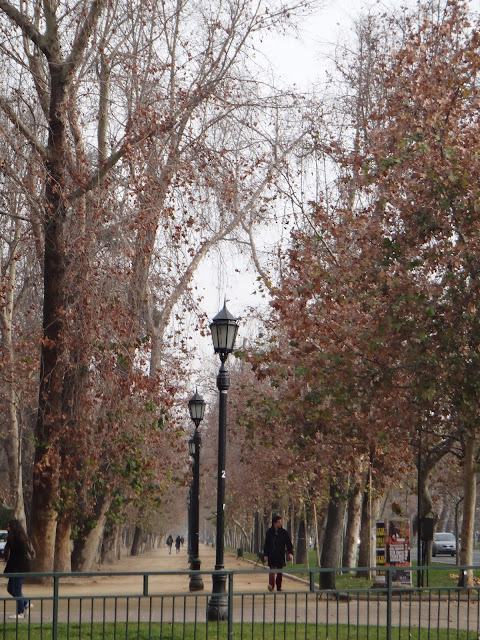 |
| Parque Forestral, Santiago de Chile |
A woman in the backseat of a car stopped at a stoplight rolls down her window and poses, I shift the camera and snap her photo. "De verdad?" (Seriously?) She shouts, a huge smile on her face. "Claro!, porque no?" (Of course, why not?) I call back. She asks where we're from and after I tell her she inquires as to if it's cold in California. This is a very common question, you see the international synonym for California is Bay Watch.
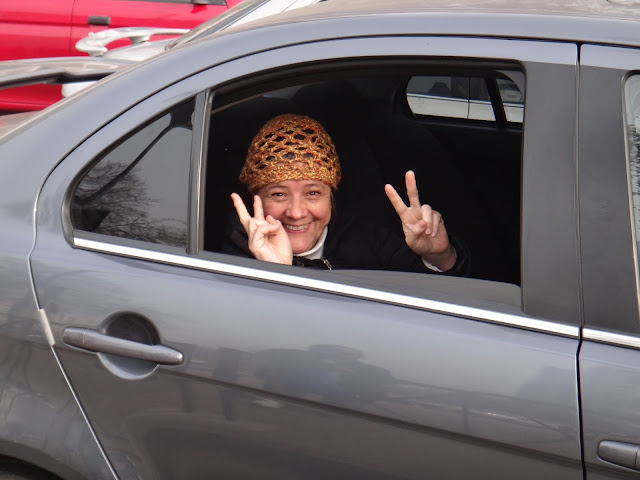 |
| My Chilean friend posing for a picture |
We cross the river, there's lots of cool (and politically loaded) graffiti on the sides of the river. There are people with blankets on the ground selling things, socks, angry bird beanies, phone adaptors, you name it. At the end of the bridge there is a couple making copper chains and selling sandwiches. This is very common I have found in Chile, people walk around with tupperwares selling "soy hamburgers" or sandwiches. We stop and watch them at work and introduce ourselves, they are Lauren and Leo a sweet couple who let me take their pictures.
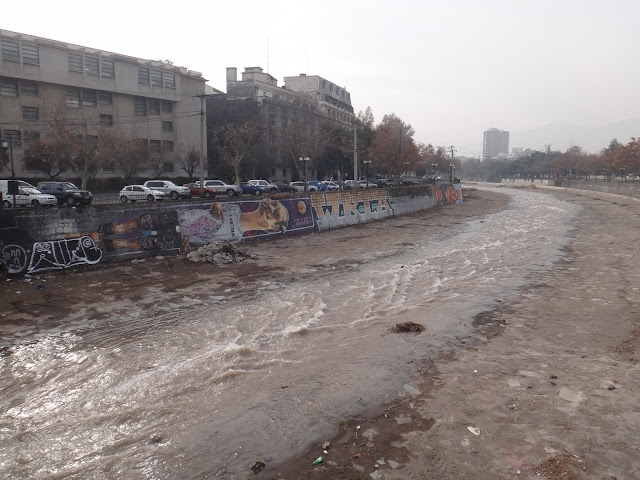 |
| Graffiti on the side of the river, Santiago de Chile |
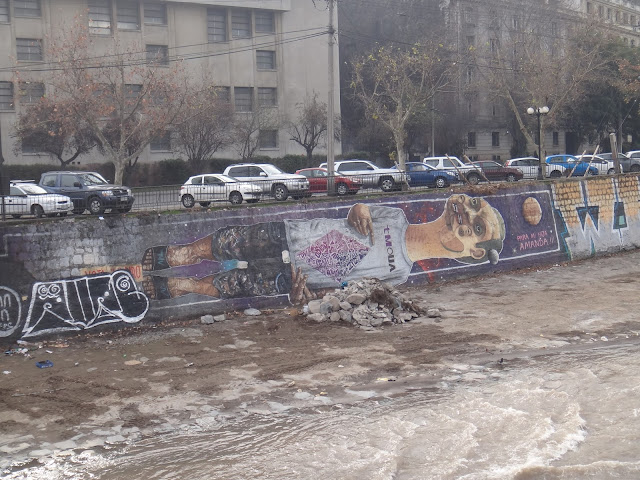 |
| close up of graffiti |
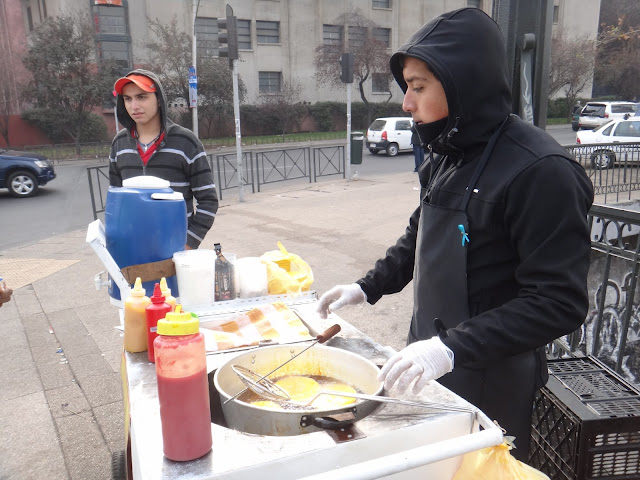 |
| Sopaipillas, fried dough sold on the street, served with ketchup, and various salsas. |
 |
| copper chain being made and sold on the streets of Santiago |
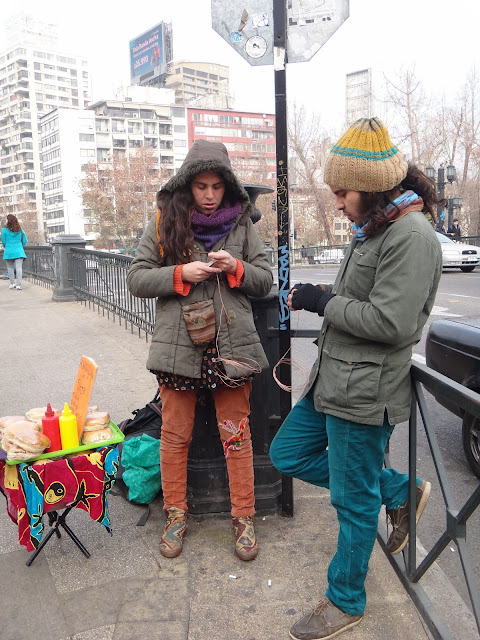 |
| Lauren and Leo, making copper chains |
We were looking to get to Cerro San Cristobal, a hill that prides views of the whole city and is home to a huge statue of the Virgen Mary. Walking up the street, we are stopped by tour companies, "HALLO!" We nod and thank them for the 657th time and continue on our way. We reach a park that has an information booth and a castle with "FUNICULAR" written on it. Bingo. The funicular is a 5 car train that goes up about 250 meters to the top of the hill; it works on a pully, the train going down pulls the one coming up, and there's a section in the middle where the tracks split off for them to pass one another. Brilliant! It was so cool! The funicular stops at the middle to drop passengers off at the Zoológico Nacional (National Zoo) and continues on its way. The view from the top is breathtaking, there are snow-covered mountains to our right and the view of the city is spectacular.
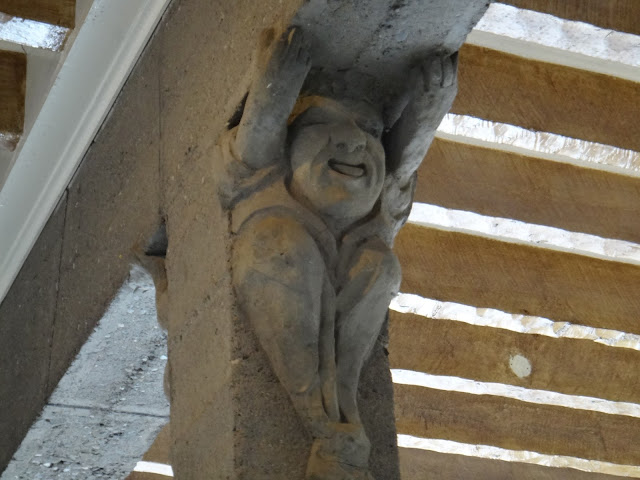 |
| cute little gargoyle things holding up a pillar at the funicular station in the Parque Municipal de Santiago |
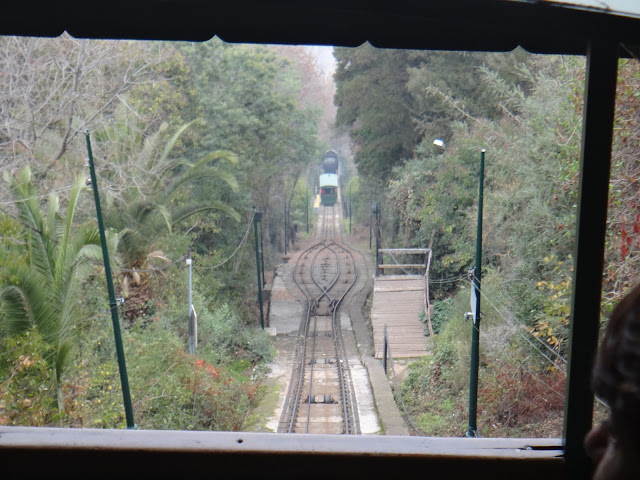 |
| Awesome funicular track. This is the section where the two cars, the one ascending and the one descending pass one another |
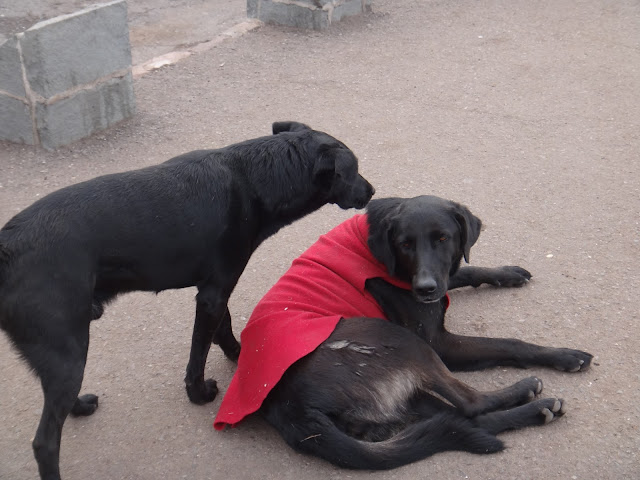 |
| squishy and his squishy friend (#Mags) |
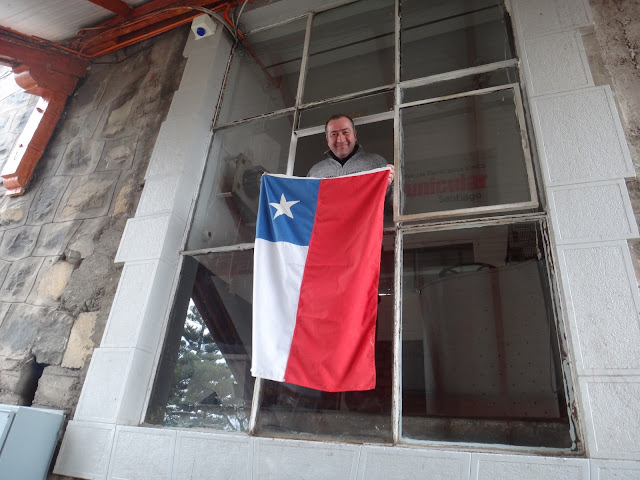 |
| proud Chilean man :) |
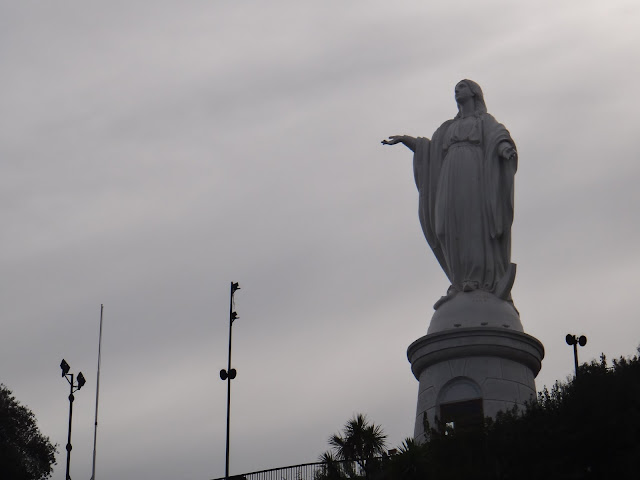 |
| statue of the Virgin Mary at Cerro San Cristobol |
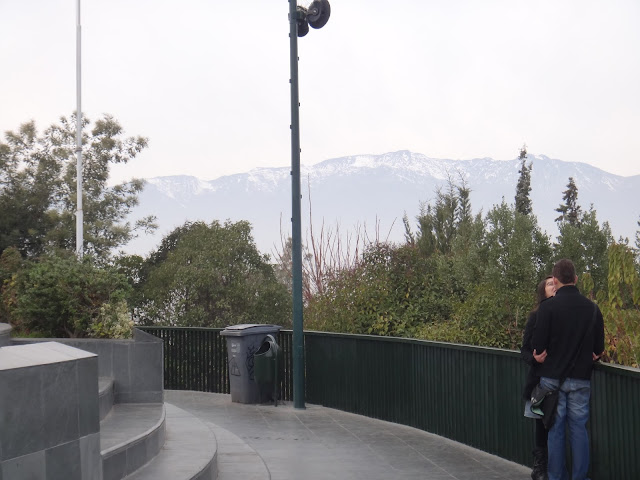 |
| cute couple at Cerro San Cristobol |
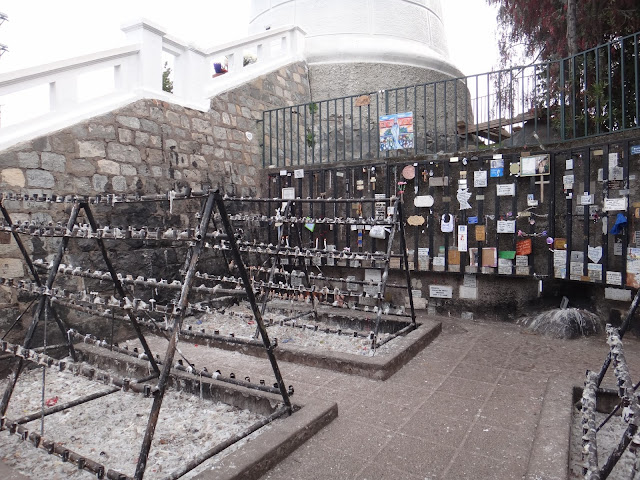 |
| candelabra at the base of the Virgen Mary Statue |
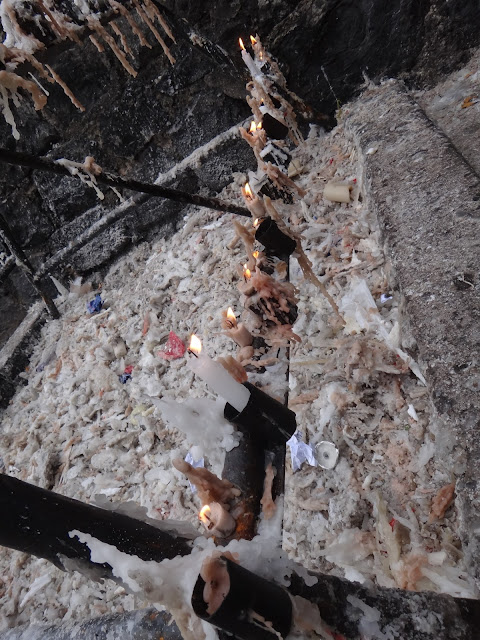 |
| Add caption |
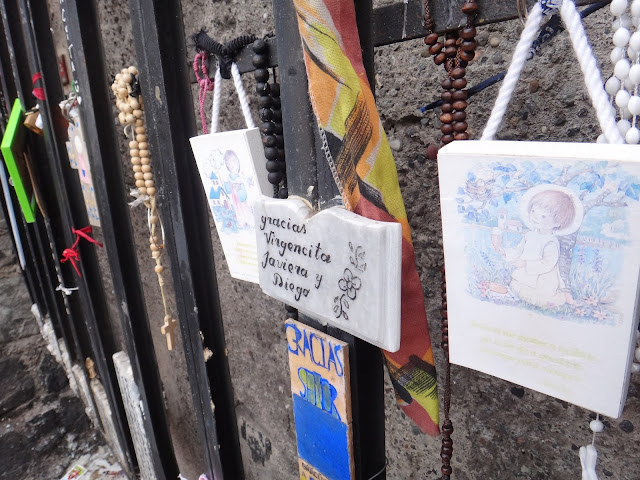 |
| notes, photos, relics of thanks to the Virgen Mary that people leave at the statue after their prayers have been answered. It seems that many people come here to pray to the Virgen Mary when they are having difficulty conceiving |
I wind my way around the top of the hill and enter the small church. It's empty except for a man who is cleaning the baptismal font near the altar. He is using a small plastic cup and emptying the water into a larger bucket, one cupfull at a time. I quietly make my way to the front of the church. Upon closer look I notice that the man is cross-eyed; he wears jeans and a long sleeve t-shirt. He works diligently and I try to make my observation of him discrete. I kneel in the front pew to say a prayer and then go to light a candle, except there are no candles. I ask the man where I can buy candles and he says at the gift shop but wait right there, I will bring you some. He puts his tools down gently, unlocks a door and disappears behind the altar. He returns a few minutes later with a bag of candles and a box of matches. I thank him and light my candle; afterwards he tells me to leave hte candles and matches on the candelabra for the next person.
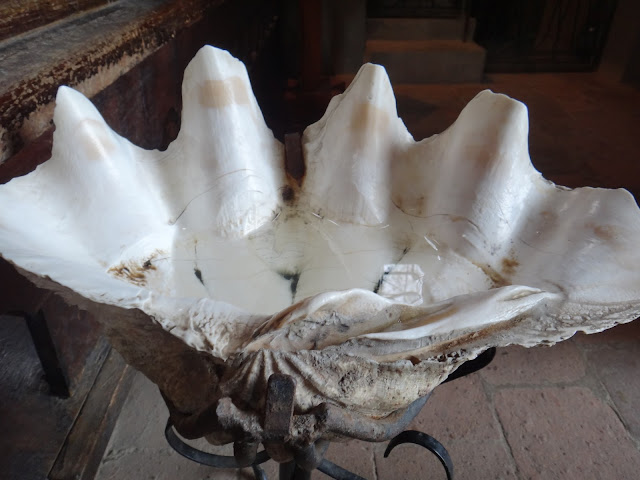 |
| Holy water in a big clam shell |
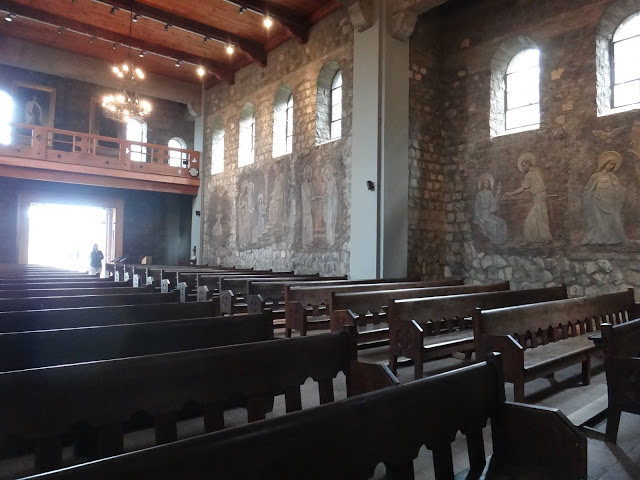 |
| Church at Cerro San Cristobol |
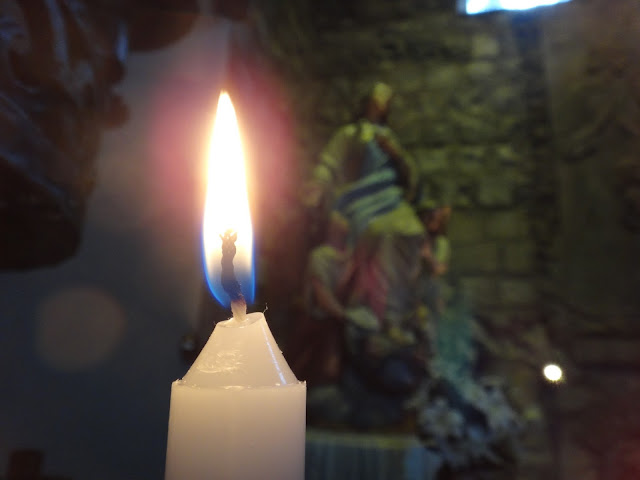 |
| The candle I lit for you |
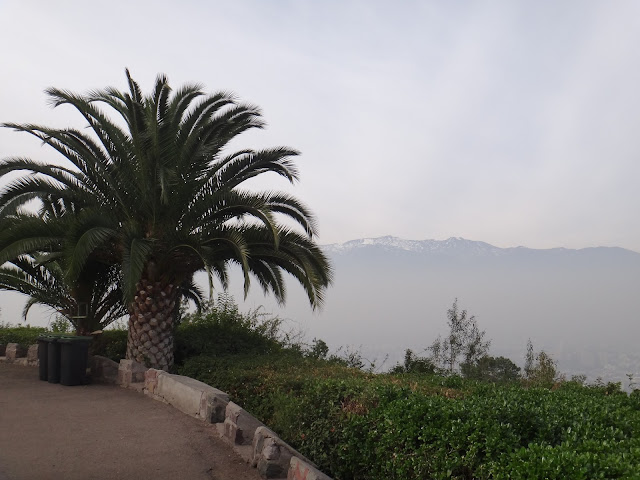 |
| Super cool, palm tree in the foreground and snow-capped mountains in the background! |
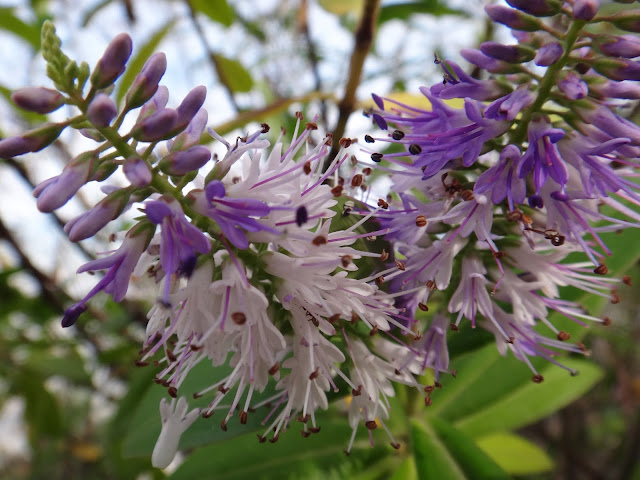 |
| pretty flowers |
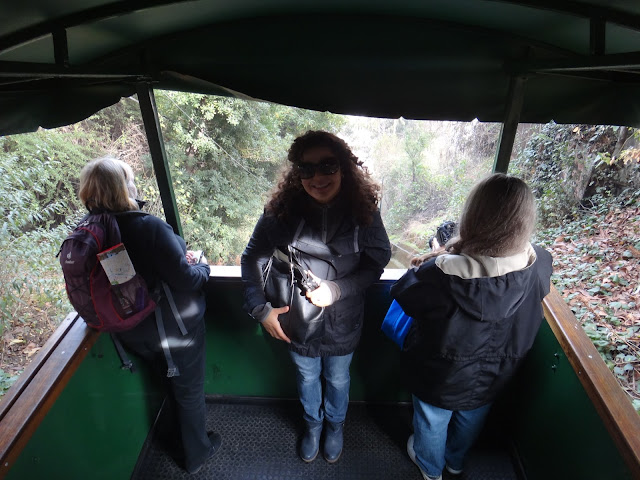 |
| Me on the funicular ride back down to town |
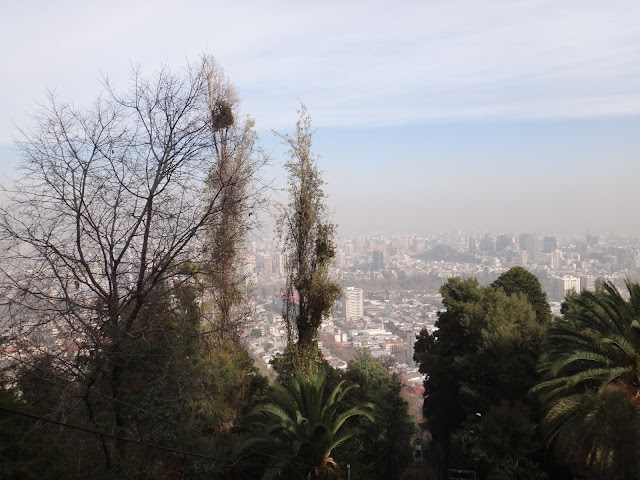 |
| View from halfway up the hill |
After getting down to the bottom of the hill, we wander the streets a bit. There's a man selling gorgeous copper jewelry and we stop to admire his work and of course chat with him. The most common gifts we see here are jewelry made of copper often with blue lapis stone. Chile is the number 1 producer of copper in the world. Silver is also very common and so is a metal they refer to as "alpacca." Alpacca, also known as "nickel silver," is a copper alloy with nickel and zinc. The precious and semi-precious stones are also very common. Anyway, the man was very friendly and pulled out a binder with photos of himself with various famous people and models. He explained to us that his expertise is metal clothing. Well, clothing is a stretch, I should say metal wear - bikinis and lingerie made in the style of chainmail. He said he is one of two people in Chile that does this type of work and that his prices are cheaper because he doesn't have any overhead costs, he sells off the street. Before we left I asked if he could recommend a place for us to have lunch and he pointed us to La Venezia, the oldest restaurant in this neighborhood, he boasted. Chile is like the U.S. in that as a nation, it is very young. Obviously there have been people living in the land that is now the nation of Chile (i.e. the Mapucha or Altacamena) but as the country we know it, it is new. So this restaurant is from 1930. Hehe.
La Venezia is a mom and pop kind of place. You walk in and seat yourself, the tablecloths are that thin red and white plastic, there's momma sitting behind a cash register and everyone is happily eating. We sit down and are handed menus and also a food-stained piece of paper with the days specials written on it by hand. The waiter runs off to attend to other people and comes back with a pen and crosses out some of the daily specials. We order and the waiter comes back quickly with bread, butter, a tomato salsa (served here with bread, pre-meal) and our drinks. They do not serve wine by the glass so I ordered a half bottle of wine and figured I would take what I could not finish home. Our food arrives and we are taken back by the generous portions. I ordered albacore and it's topped with butter and smoked pepper powder. Two men walk in and one of them looks over at my plate and says yum, what's that. I tell him and he asks where I'm from and we start to chat. Halfway into my meal I offer my new friend, Juan, a glass of wine. He says no thank you although he really wants some, but he has a meeting at four. "It's just one glass," I insist and he quickly concedes. He makes a toast to our safe travels and reminds me that one must look in the eyes of their drinking companion when toasting. You hear this in many cultures, the French say that you have seven years of bad luck in bed if you don't, I've heard others say that it's simply bad luck to not. I think it's just polite to look in someone's eyes but I have a further explanation. I've heard two reasons for why people touch their glasses when they make a toast. The first is that when you drink, you are invoking 4 of the 5 sense, touch, smell, taste and sight but sound is missing, so when you hit glasses, you are now making the act of drinking involve all five senses. The other explanation I have heard is that back in the day, kings would often poison their enemy's drink over a meal by slipping the (poisonous) contents of their ring into their dining companion's (read: enemy's) drink. The "guest" of the king would then clink his glass to the king's and make sure some of his drink spilled into the king's; if the king drank it the guest was safe. When you look into someone's eyes you are holding them accountable on a nonverbal level. I have gone off on a tangent, so please excuse me.
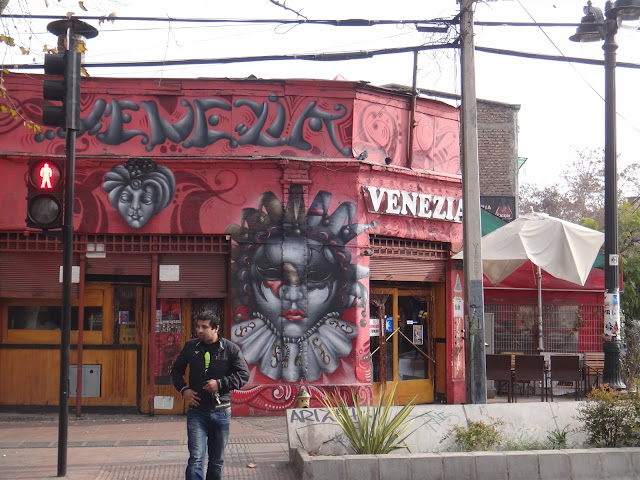 |
| La Venezia en barrio Bellavista, Santiago de Chile (La Venezia restaurant in Bellavista neighborhood/district, Santiago, Chile) |
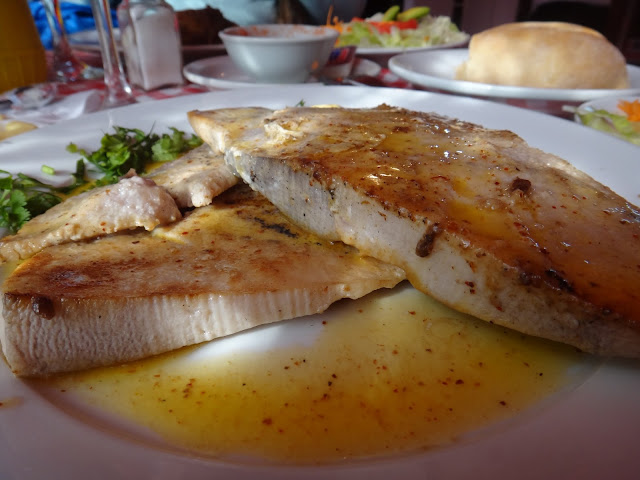 |
| Albacore |
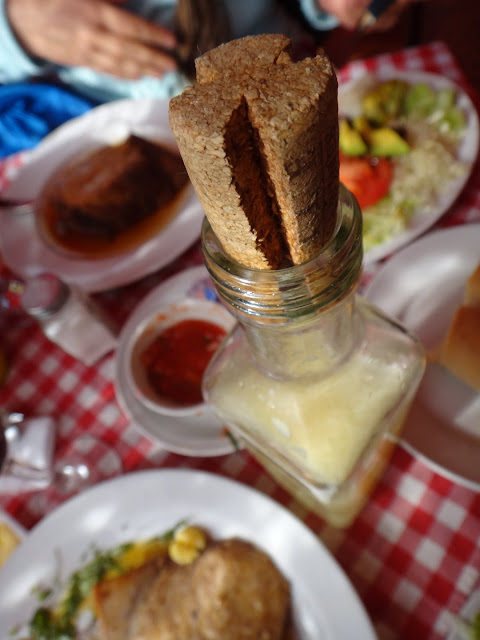 |
| nifty way to pour lemon juice, slits in a cork (Papa B will love this!) |